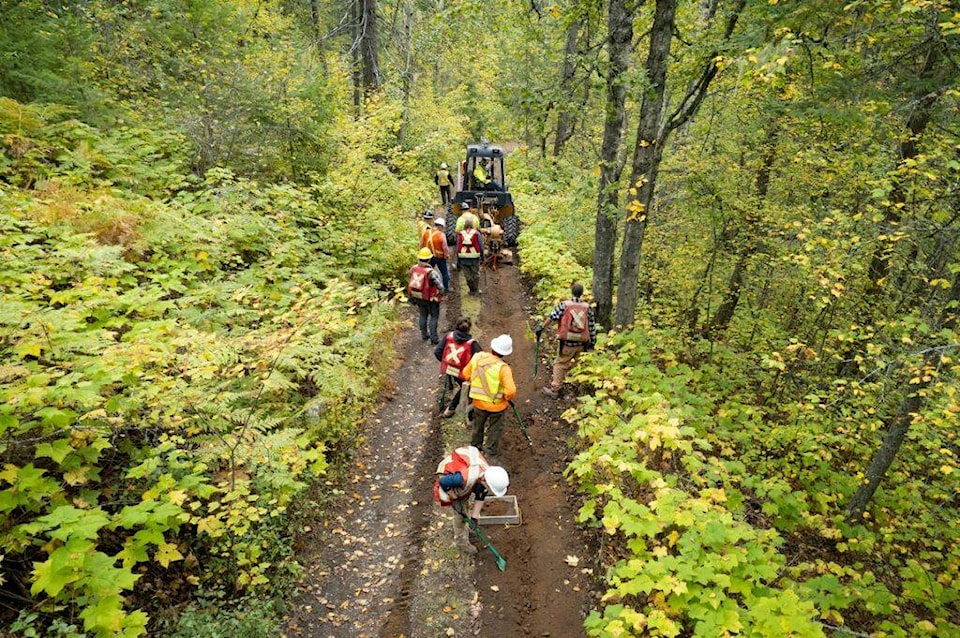Submitted by Columbia Basin Trust
**********************************
Columbia Basin Trust has successfully added 125 kilometres of high-speed fibre optic cable to its broadband network in the Slocan Valley, to just north of Nakusp. Internet service providers can now connect to this regional backbone, receive a higher-quality connection, and in turn improve the services they offer to customers.
“Affordable, reliable and high-speed internet connectivity is no longer a luxury; it is a basic requirement to access information and services in today’s world,” said Johnny Strilaeff, President and Chief Executive Officer, Columbia Basin Trust. “Too many Basin communities continue to struggle with inadequate connectivity, and residents have clearly stated a need to improve their services to the same level as that offered in more populated areas. This project provides the necessary backbone infrastructure for internet service providers to offer a considerably higher level of service to residents and businesses in the Slocan Valley.”
The broadband network is a linked series of fibre optic cables, located both above- and below-ground, that transfer information at high speed and volume. The new cable runs from Playmor Junction to Shoreholme, just north of Nakusp. The communities that will benefit are: Appledale, Brouse, Crescent Valley, Hills, Lebahdo, Lemon Creek, Nakusp, New Denver, Passmore, Perrys, Playmor Junction, Rosebery, Shoreholme, Silverton, Slocan, Slocan Park, South Slocan, Summit Lake, Vallican and Winlaw.
“Reliable, high-speed internet is vital to daily life for everyone, no matter where we live. For too long British Columbians in rural and remote communities have been underserved when it comes to this essential service,” said Katrine Conroy, Minister of Forests, Minister Responsible for Columbia Basin Trust, Columbia Power Corporation and the Columbia River Treaty, and MLA for Kootenay West. “I am excited for the people in the Slocan Valley to enjoy the benefits of improved connectivity, ensuring they can stay connected and better access jobs, education, economic opportunities, healthcare and emergency services.”
This Slocan Valley project cost $7.3 million. This includes $3.4 million in funding from the Trust, $343,000 from the Regional District of Central Kootenay (RDCK) and contributions from the municipalities of Slocan ($27,675), Silverton ($26,000), New Denver ($37,500) and Nakusp ($90,500). The project also received $3.4 million through the Connecting British Columbia program, funded by the Province and administered by the Northern Development Initiative Trust.
“As Columbia Basin Trust extends its fibre-optic backbone by 125 kilometres, numerous residents and businesses in the Slocan Valley will eventually benefit from reliable high-speed internet,” said Joel McKay, Chief Executive Officer, Northern Development Initiative Trust. “Providing people with the ability to virtually connect with other people, businesses and resources around the world will create many far-reaching benefits for those who live, work and play in the region.”
“Improving connectivity throughout our region has been a top priority for the RDCK for a long time, and we are fortunate to work with Columbia Basin Trust to see this essential project completed,” said Walter Popoff, RDCK Board Vice-Chair and Area H Director. “Reliable high-speed connectivity will allow residents in the Slocan Valley better opportunities to work remotely, expand their businesses, connect to emergency services and generally stay connected to the world beyond the RDCK.”
“The completion of this project brings the Regional Connectivity Committee’s vision of bringing equitable, affordable high-speed services throughout the region to life,” said Rob Gay, Chair of the Southeastern BC Regional Connectivity Committee, which is a partnership between the Trust; regional districts of Central Kootenay, Columbia Shuswap, East Kootenay and Kootenay Boundary; Ktunaxa Nation; and Village of Valemount. It has created a strategy to enable world-class connectivity for the region and is moving forward on implementing it, such as through the Slocan Valley project. “By making large strides like this, we are ensuring the growth of rural economic development and sustainable, healthy communities.”
Columbia Wireless is an internet service provider that will link its network to the new section. “This will increase internet speeds to all of our existing customer base considerably, and allow us to offer fibre speeds to whole communities where we couldn’t before,” said Ben Leslie, Chief Executive Officer. “Students can stay at home and do college online, without having to move away,” he offered as an example. He has also heard of patients who can manage their conditions by connecting to their doctors online. “It gives everyone a nice, local advantage.”
The Trust has also completed a 60-km expansion of its network in the South Country. There are two additional projects on the go, which will add approximately 100 km total: between Fruitvale and Nelson and between Kimberley and Wasa. Once all these sections are complete, the Trust’s backbone will be 1,285 km long.
